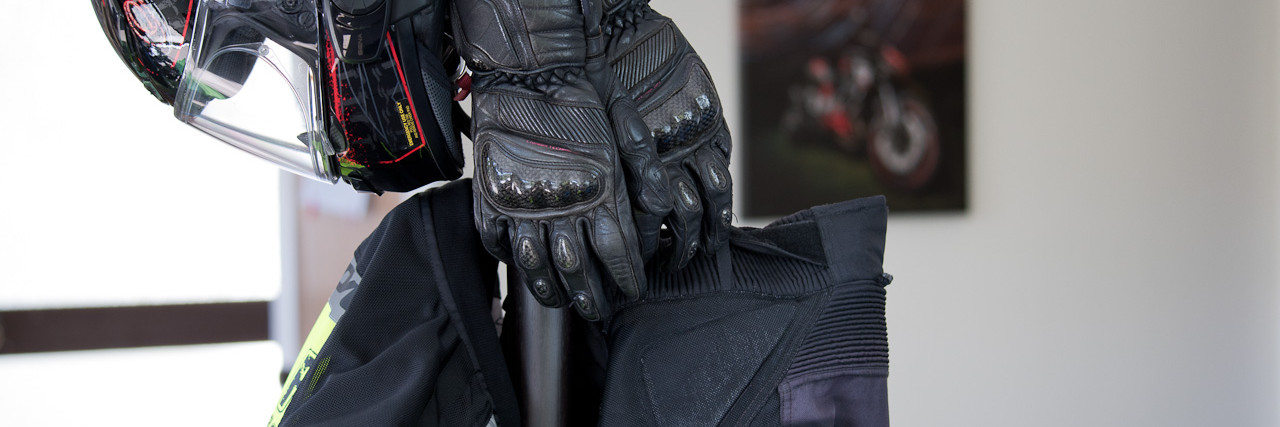Gear checklist
Basic protective gear is a must for every ride. The keys are abrasion resistance and impact resistance, then comfort and weather protection. Here’s a guide to the essentials.
Helmet
By law, you have to wear one whenever you ride your motorcycle. Head injuries are among the most serious you can have. Check the SHARP website for relative performance, but make sure your choice fits closely and comfortably around your whole head.
Boots
Feet and leg injuries are most common of all in riding accidents. Proper motorcycle boots with built in armour make a big difference. Breathable waterproof boots make a good choice.
Gloves
The first thing you do to protect yourself when you fall is put your hands out. Never, ever ride without proper motorcycle gloves. Look for good armour, comfortable fit and water resistance where necessary.
Armour
Next to head injuries, spinal damage is the worst issue you can face. An approved back protector, in or under your jacket or leathers, is extremely important.
All joints should be protected by CE-approved armour inserts. D3O armour is an innovative technology that moulds to your body shape, so it’s soft and pliable to touch, but chemically changes when hit by hard forces to instantly harden. For some, it's more comfortable than conventional armour while offering CE-certified protection.
Jacket or leathers
One-piece or zip-together two-piece leathers offer the ultimate protection. Textiles are usually waterproof but they vary a lot in abrasion resistance, so check MotoCAP’s star ratings. Ensure CE-approved armour will protect all your joints and back (see below).
Jeans
Choose leather or abrasion-resistant textile with knee and hip armour. Zipped to your jacket is best. Kevlar-lined jeans may suffice for a short, casual ride and many have pockets for knee armour.
Bike-orientated streetwear
Casual-style apparel offering some protection has become increasingly popular. While most won’t offer as much protection as top-performing conventional motorcycle gear, for round-town, low-speed riding it’s a better option than civilian clothing.
As well as Kevlar jeans, you’ll find armoured hoodies and overshirts, ankle boots and wrist-length gloves. The usual advice applies: look for CE-approved armour in the right places with materials and stitching that will offer some abrasion resistance.
Visor
Tinted visors only work in bright sunshine. After dark they are a danger. If you’ll be riding after sunset, go with a clear visor and sunnies. In rain and poor visibility, only use a clear or high-vis yellow visor.
Get-you-home kit
Whether under-seat or in your bike’s tool kit, it pays to have a few items packed away to get home safely in an emergency:
- A lightweight, stowable waterproof jacket or oversuit for rain and cold
- Jacket liner. If you can stow it on the bike, zip it in when the cold bites
- Chain lube. A mini can for longer rides
- For an emergency petrol fund, stow a $10 note in a ziplock bag inside the bike toolkit (so it won’t blow away). Or duct tape five $2 coins together.
Remember – wear all the gear
A crash can happen at any time, often when you least expect it. So make sure you wear 'All The Gear All The Time' – ATGATT.




